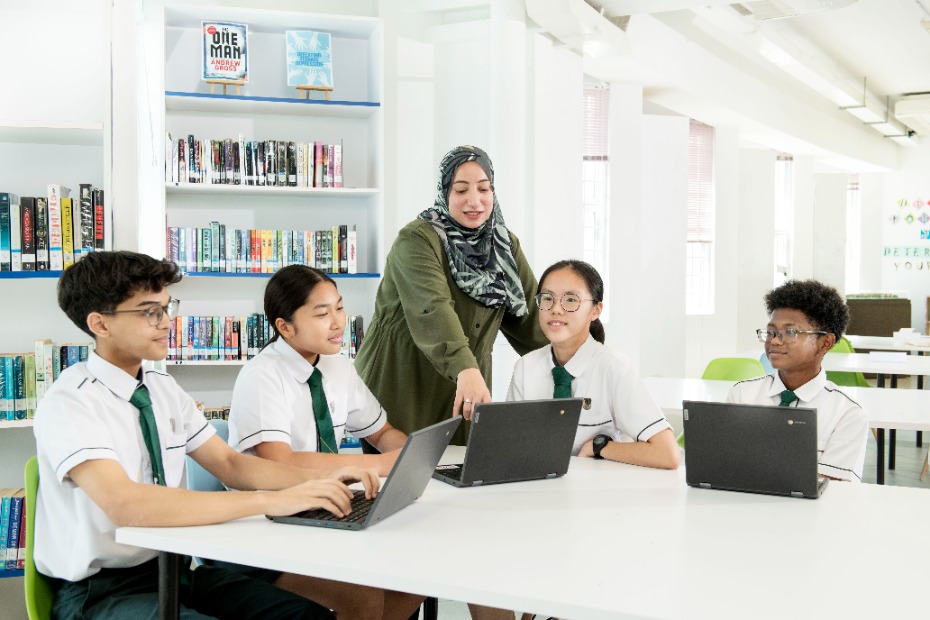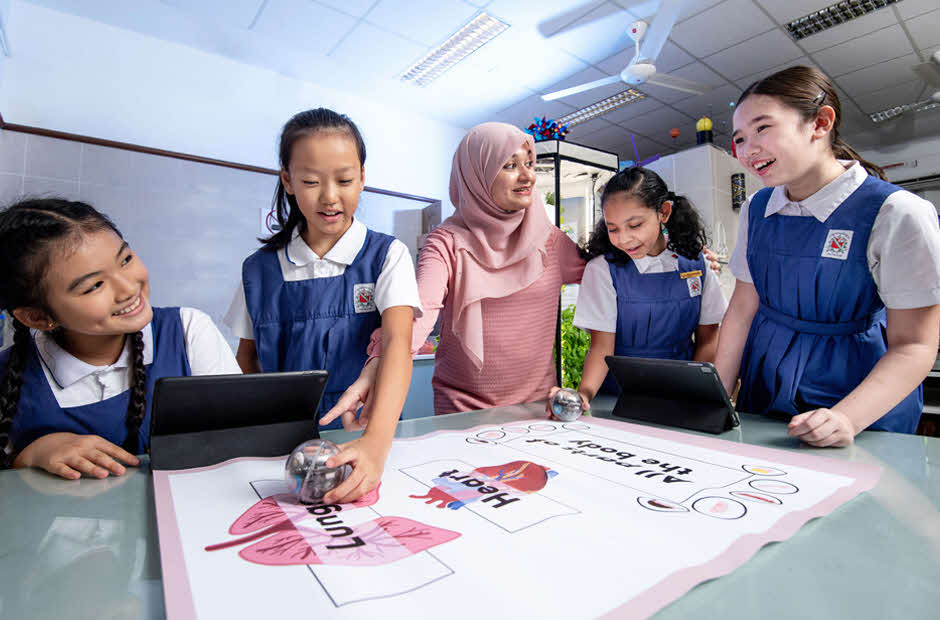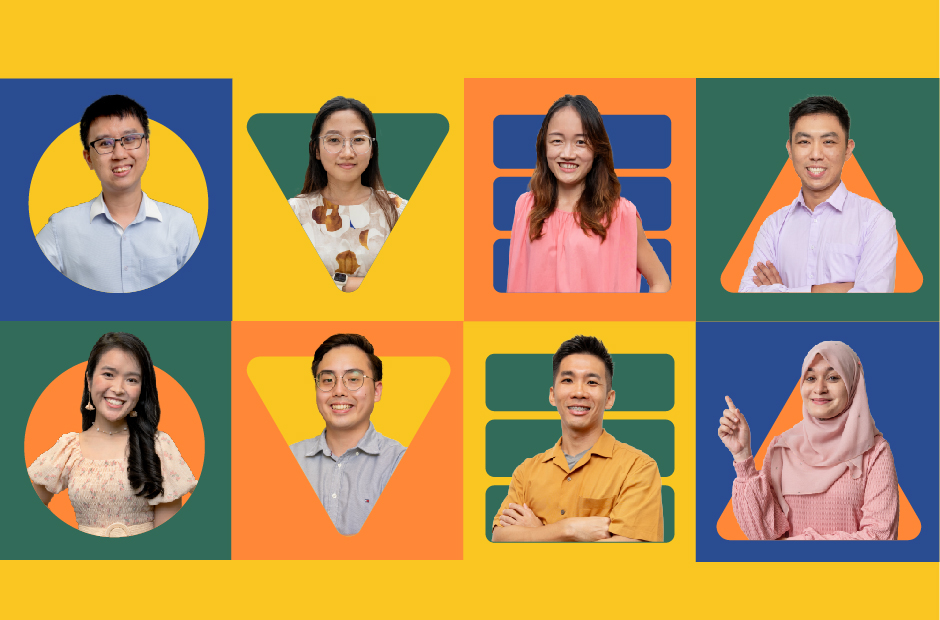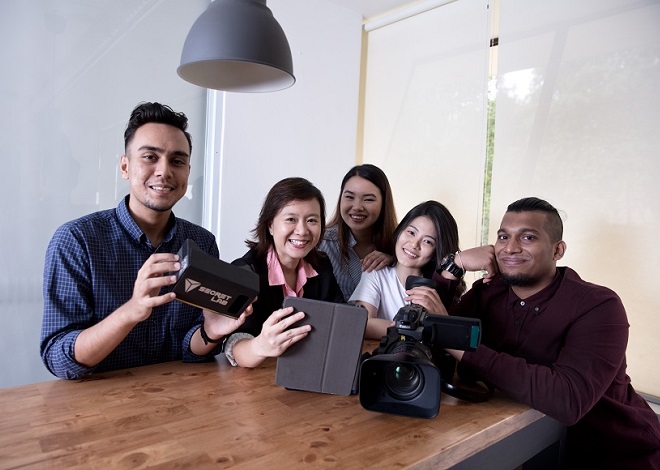What inspires you to teach?
When I was in primary school, I struggled to fit in. My teacher Ms Siti Khadijah Aron helped me build confidence in myself through constant encouragement and motivation. She showed me what it meant to be compassionate and resilient with a strong ‘teacher heartbeat’ for students’ well-being. I try to be the same and be a significant adult that my students can turn to.
Every child has a story and every incident that happens has a reason. Students are allowed to make mistakes and our role as educators is to help them learn and grow from it. That’s why, as Discipline Mistress for my level, when I see students when they are agitated or angry, I always ask “what” instead of “why”.
Asking them “Why did you do this?” becomes an accusation. Instead, I ask, “What made you do that?” or “How did this happen?” This gives students the chance to share their perspectives and their thoughts behind the situation.
“I try to help them see their best course of action, even admit their mistakes and learn from them.”
Mdm Shariffa Amalsharaff Aledroos
In their life ahead, what will benefit them is to understand their own impulses and take ownership of their mistakes. So, I approach challenging behaviour from this aspect and not with punishments and consequences.
Being a discipline figure is not easy and I have to take tough decisions sometimes. When students see me climbing up the stairs, I can hear shouts down the corridor: “Mdm Shariffa is here!” But they also turn to me for advice and I am grateful for their confidence in me. They talk to me about complicated home environments, conflict with friends, study-related stress, and much more. I try to help them see their best course of action, even admit their mistakes and learn from them.
Every student needs this opportunity.

Describe a teaching approach you have found effective.
I’m also a Malay Language Subject Head and technology is my friend.
“’Cher, why do we need to learn Mother Tongue?” is something I hear when students complain about how they could enter polytechnic or Junior College using grades from other subjects.
So, how do I help students see the advantages of learning their own culture, connecting with older generations, or if they travel in the region or seek job opportunities in neighbouring countries?
Tap on tech to engage and enthuse my digital native students and show them the link between what they learn in the classroom and the real-world application of the language.
I pick up social media trends, whether it’s TikTok, IG Stories, or FaceBook, and tap on my students’ interest and expertise in these. For example, I use Canva digital comic strips to teach them idioms, which led to one of my students creating a conversation between two characters based on the idiom Cakap siang pandang-pandang, cakap malam dengar-dengar (it means that one needs to be mindful when talking so as not to hurt others who may hear the conversation). Through this activity, students were able to showcase their creativity by designing characters, settings and dialogues.
Outside of the Malay lessons, I started a TikTok challenge for students to share tips on looking after their Personal Learning Devices (PLD). Now, instead of a poster, students scan a QR code to view fun videos made by classmates on responsible usage of their PLDs.
I am also keen to encourage my colleagues to design lesson materials using tech. Last year, my team and I created the Keep in Tech @ SFSS Telegram channel, where teachers learn from one another about different tech tools. This school-wide initiative promotes a sharing and learning culture and helps us improve our teaching practices. Teachers and students have created Tik Tok videos on a variety of topics, like World War II, post-war policies, and the meaning of citizenship.
Over the past year, we have shared about tech tools for assessment, gamification, TikTok in education, creative writing apps like Storyjumper, and how to use Apple and android TV in class. We currently have 93 subscribers and teachers are definitely more confident in trying out the tech tools learnt with their classes.
Which school initiative are you especially proud of?
“Are parents responsible for their child’s misuse of social media?” “Is race even relevant in today’s world?”
These are some of the topics that my students discussed in the Malay-language podcast programme that I co-created with them. Dihasilkan Oleh Pelajar Untuk Pelajar, a programme created by students for students, was my effort to give autonomy and choice to my adolescent students.
Students took the lead in collaborating with one another, creating meaningful content for the podcasts, which significantly contributed to their confidence and fluency in conversing in the Mother Tongue language. Each podcast is helmed by three students.
Besides speaking with confidence, what I found interesting was the ability of these teenagers to offer varied perspectives on trending topics that showed their critical thinking ability.
What was even more interesting was the reaction of the classmates. After listening to the podcast on the relevancy of race, the class shared deeper insights about the Maria Hertogh incident than they had done previously. The podcast by their peers had obviously brought the message closer to their own lives. These insights also showed up in their writing.
Learning beyond the classroom is an important aspect of education that helps students develop important skills and prepares them for the real world. I partnered with Tampines CC so my students could use their recording studio and experience podcasting in a professional setting.
The next highlight was an opportunity to engage in a discussion with Mr Masagos Zulkifli (MP of Tampines GRC) at the podcast studio, where they talked about the role of youths in community building and contributing to an inclusive society. That was a great morale-booster for the team.
The podcasting programme is expanding. After the Mother Tongue Department, we have now partnered with the English Department, who have discussed wide-ranging issues, such as global warming, gaming addictions, music culture, and the Internet of Things. We hope to expand this to the other departments in years to come.






